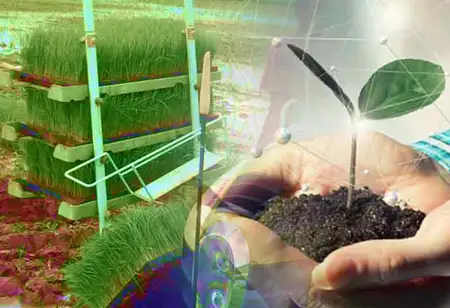Thank you for Subscribing to Agri Business Review Weekly Brief
Advancements in Agricultural Biotechnology Landscape
The convergence of agriculture and technology has made significant progress in recent years, transforming conventional farming methods into highly efficient, data-centric processes.

By
Agri Business Review | Friday, October 13, 2023
Stay ahead of the industry with exclusive feature stories on the top companies, expert insights and the latest news delivered straight to your inbox. Subscribe today.
The future of agricultural biotechnology promises enhanced crop yields, improved disease resistance, and sustainable practices, addressing global food security and environmental challenges.
FREMONT, CA: The convergence of agriculture and technology has made significant progress in recent years, transforming conventional farming methods into highly efficient, data-centric processes. One of the most promising developments in this synergy is the integration of AI into agricultural biotechnology, with a specific focus on crop surveillance and disease management. As the world's population continues to grow, exerting greater pressure on food production, AI is becoming an indispensable tool for promoting sustainable agricultural approaches and addressing challenges stemming from climate change and limited resources.
Farmers traditionally relied on personal observations and general principles to assess the condition and development of their crops. Nevertheless, these approaches often lacked precision and missed minor changes that could have a substantial impact on crop yields and quality. AI-powered technologies are changing this by providing continuous crop monitoring and analysis with a level of accuracy and scope previously unattainable.
Remote Sensing and Imaging: Advanced imaging sensors on satellites can gather precise information about crop conditions, moisture levels, and nutrient content. Through the use of artificial intelligence algorithms, this data is analysed to provide farmers with precise insights, enabling them to detect variations in growth and health within their fields. This technology has the potential to enhance the efficiency of irrigation and fertiliser usage, ultimately reducing waste and improving resource management.
Drones and UAVs: Unmanned aerial vehicles equipped with cameras and sensors are used to capture high-resolution crop images from various angles. Advanced algorithms are employed to analyse these images and identify signs of crop stress, disease, or nutrient deficiencies. This technology allows farmers to take specific corrective actions by identifying problems at an early stage, ultimately reducing potential crop losses.
IoT Sensors: When integrated into the agricultural landscape, IoT devices collect up-to-the-minute information on variables like soil moisture, temperature, and various environmental factors. Through the use of artificial intelligence, this data is analysed to create predictive models that assist farmers in making well-informed decisions regarding irrigation and crop protection measures.
Proactive Strategies with AI: Disease outbreaks pose a significant threat to global food security, as they have the potential to devastate entire crops if not promptly addressed. Conventional disease monitoring and management methods are often reactive, resulting in substantial economic losses. AI technologies offer a more proactive and efficient approach to disease control.
Early Detection: AI algorithms can process extensive datasets from diverse sources, including images, meteorological data, and historical medical records. They can detect subtle changes in crop health or atmospheric conditions, enabling the anticipation of disease outbreaks before visible symptoms appear. This timely awareness empowers farmers to implement measures aimed at preventing or minimising disease spread.
Disease Identification: AI-driven image recognition technology effectively identifies specific plant diseases using images of leaves or other plant parts. This capability enables farmers to quickly diagnose the problem and select the appropriate treatment, reducing the need for extensive manual knowledge and simplifying the decision-making process.
Precision Treatment: AI can enhance the efficiency of pesticide and fungicide applications by considering variables such as disease prevalence, current weather conditions, and crop growth stage. This precise approach reduces chemical usage, thereby decreasing the environmental impact, and proves highly effective in disease management.
The fusion of AI and agricultural biotechnology is revolutionising the way crop monitoring and disease management are handled. By providing real-time information, early detection, and accurate treatment recommendations, AI tools empower farmers to base their decisions on data, leading to improved crop production, reduced resource usage, and more effective disease management. As these tools continue to advance and become more widely available, the future of agriculture holds promise for safeguarding global food security and promoting sustainable farming methods.





